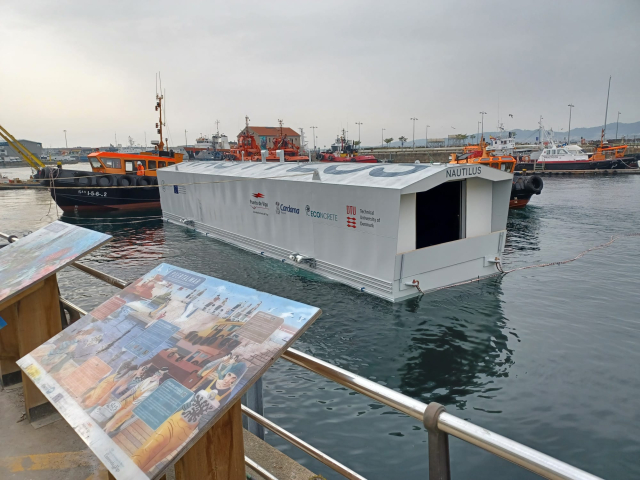

70 % of coastal and marine infrastructures are made of concrete which is a known damage-inducer to underwater ecosystems. Concrete is also susceptible to climate change degradation and comes with high carbon footprint. A solution for carbon-storing, ecologically friendly, structurally superior concrete is needed and at scale to meet the standards of marine construction. The EU-funded Living Ports project showcases the adoption of such a technology in maritime construction best practices. This infrastructure uses biomimicry to bring concrete to life, delivering unique benefits and cost savings. In summary, this project has the goal to transform "grey" infrastructures of the port environment into “green” infrastructures for the improvement of the provision of ecosystem services of the marine port environment and create a CO2 fixation system through the design of innovative eco-engineering units recreating habitats lost due to port development. This project directly interlinks with Pillar I of the Atlantic Strategy that sets out to develop ports as gateways and hubs for the blue economy and present goals such as the Development of eco-incentive schemes to upgrade port infrastructure, creation of a network of green ports by 2025 and the launch of an Atlantic strategy on liquefied natural gas.
Reducing the ecological and carbon footprint by promoting the development of rich and diverse marine life
This project is part of the Blue Growth strategy of the Port of Vigo and reaffirms the commitment of the Port Authority of Vigo to the European Green Deal and the Sustainable Development Goals (SDGs) of the 2030 Agenda. This innovative concrete solution, called ECOncrete® technology, reduces the ecological and carbon footprint and is designed to promote the development of rich and diverse marine life as an integral part of coastal and marine infrastructure such as breakwaters and urban waterfronts. It relies on three fundamental elements: bio-enhancing concrete compositions, complex surface textures, and science-based designs. The large-scale deployment of this technology, currently taking place in two locations within the Port of Vigo (A Laxe and Bouzas), aims to enhance the quality and spectrum of ecosystem services, restore aquatic habitats, improve water quality, reduce the dominance of invasive species, and increase local fish populations by enhancing habitats.
The Living Ports project represents the first large-scale experience in the installation and use of ECOncrete® technology in port infrastructure, a pioneering effort aimed at transforming the Port of Vigo into a green and inclusive port in line with the European Green Deal, while fostering port-city integration. This visionary project encompasses a broad range of sustainable initiatives, ranging from the implementation of cutting-edge technologies to enhance environmental efficiency and resilience in port operations to the promotion of environmental education. The project will be a flagship example of nature-friendly port infrastructure: an active waterfront that also serves as a thriving habitat and community focal point, with which the Port of Vigo aspires to serve as a pioneering model for other ports worldwide, inspiring the transformation of the maritime industry towards a greener and more sustainable future.
said Carlos Botana Lagarón, head of the sustainability department of the Port of Vigo
It is also important to highlight the socio-cultural impact of the Living Ports project since it is expected to foster greater environmental education and community involvement, promoting port-city integration through community programs and outreach activities planned during the project. Accessible observation platforms have been installed, including a unique underwater observatory called "Nautilus."
Further information about the Project:
- Reference: H2020-EIC-FTI-2018-2020
- Project duration: 01.06.2021 – 31.05.2024
- Project locations: Spain, Denmark and Israel
- Overall budget: €3 117 618,75
- EU contribution: € 2 484 292,88
- Entities involved: The Israeli company ECOncrete, the Port of Vigo, Cardama Shypyard and the Technical University of Denmark (DTU)
Channels to know more about the project:
- Official website of the project: https://www.livingports.eu/
- LinkedIn: https://www.linkedin.com/company/living-ports/
